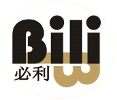Quality in China: What is it and how to get consistent quality in a developing China

Quality and China:
China is just starting its quality revolution and very similar to what the west went through in the 70’s and 80’s. I grew up in North America during this time when the shelves in stores were full of cheap products with poor designs and half of them didn’t even work taking them right out of the box. After World War 2 North America was booming and inventors and companies were flooding the markets with cheap poorly made products. As North American’s income and quality of life started to rise we consumers started demanding better products. It took about twenty years of quality revolution to rethink our manufacturing processes and learn how to build better products. Being driven by the quality fore fathers like Edward Deming and Joseph M. Juran the development of new systems and management practices came into place and our products improved.
Motorola developed the well known Six Sigma quality techniques and Japan applied “Lean manufacturing” leading Toyota to become one of the world’s largest automobile manufacturer challenging the North American market with good quality but inexpensive cars. North American quality practices improved as they did throughout the rest of the developed world and consumers began to enjoy excellent quality products.
China is just starting to understand quality but this has, for the most part been driven by western facilities trying to make products here not the drive of consumers. In China the store shelves are still packed full of cheap, poorly made products that don’t work well. I have been here over eleven years now and the Chinese made product is pure rubbish. As an example my Finnish partner and I built a mechanical workshop using the regular products from the market place. Literally all of them, one hundred percent with no exceptions had to be fixed or modified just to use and installed to our standards, and most of them had to be replaced within a few months from flat out failure due to poor quality. The country is full of poor quality with a lot of really nice people that haven’t been through a quality revolution so they really have no good concept of what good products are and simply accept the rubbish. They themselves are relatively poor and undeveloped and those that are a little more sophisticated tend to buy foreign brands. These are the people in the factories building your products. Without a good concept of quality and leaders that are not spending the time and money to build into their facilities quality systems and education it is no wonder there is a huge quality problem in China.
What is Quality?:
Quality can be summarized by this quote from William A. Foster; “Quality is never an accident. It is always the result of high intention, sincere effort, intelligent direction, and skillful execution. It represents the wise choice of many alternatives.”. You cannot inspect your way to quality, one of the biggest myths and mistakes made is the notion that you just need to inspect more product and that by hiring an inspections company to randomly check some products you will receive a container full of quality product. Quality must start and stop at the facility, it must come from the leadership and be driven down through the organization to the shop floor. It will take time, cost money and be difficult to realize depending on the leadership of the organization and the effort and methods used to educate and implement one of the quality systems proven to be effective.
This effort, intelligence, intention and execution is part of why most facilities do not do it and in the end it always costs them twice as much. A good example is “processing defects”. This country is notorious for processing defective products. Take for an example an assembly line that assembles a product that goes from one work station to another. Work Station A takes a part and installs a component, it moves to Work Station B and another part is installed, then to Work Station C, D, and E and so on until the product is complete, inspected, tested, packaged and placed in a finished product bin. Sounds good? Maybe but it is highly likely that there is not a good system, education and instructions for Work Station A to inspect the part before performing their work and if it doesn’t meet the quality standard it should be sent back, if okay then install their component and move the part to Work Station B. Work Station B should then inspect the part to ensure Work Station A did their part correctly before installing their component, then Work Station C check B’s, and Work Station D check C’s and so on. If any one of the work stations receives a part and the previous work and it is not right then it should be sent back.
This simple set of checks helps prevent processing of defects but unfortunately time and time again the workers on the assembly line do not have knowledge or adequate training on the complete part, how to check the previous work stations work so they simply just install their part and it moves along the line to the end. A final overall inspection is done and often there is a mistake in the part that can’t be seen from the overall inspection and the product fails when the customer is using it.
To provide another analogy the roads in China are built quite well. Big, wide, two and three lane roads with nicely painted lines, good lighting and signs. They really are good but they are full of cars being driven by people that don’t know the rules, don’t follow the rules, drive picking their own path which is always the shortest possible route. They cross the double line 50 meters back from the light and travel down the wrong side of the road to make their left hand turn cutting the corner very tight. The factories are similar in a way. They have these huge buildings full of machines and equipment but it is full of people that just don’t know how to use the facilities they have, they work on the floor and find the cheapest way to do it which almost always leads to cutting corners, just like they drive. Nobody seems to care it is just the way it is done and on the roads it produces more accidents and congestion. Similarly in the factory it produces defects and parts that prematurely fail. The average Chinese manufacturer is still way behind the developed world and do not fully understand the importance and benefit of taking the time to set up their facility well, create a good work environment, build in a quality system and follow it through to produce quality made parts.
They just simply don’t know and for the most part don’t care. It is not right or wrong and we can’t fault people for not knowing. You have to be wiser, understand this situation and choose appropriate factories and partners to help you realize your China strategy. You have to select a good China partner then you can begin to apply your Western wisdom and experience to help the facilities you work with to expand their knowledge, their practices to produce better products. The Chinese need to sense your care for them and willing to understand at least a bit before being understood. Steven Covey said it well teaching North American’s leadership with the phrase “Seek first to understand before being understood”. This applies here as much and possibly even more than it does in North America.
I really hope this makes sense to you and helps you better understand what you will be facing as you try to build quality products in China. It will require understanding and patience on your part and then driving or helping your chosen facility to understand your products, set up properly to produce them and apply or develop a system that produces consistent quality.
Finding a Chinese Manufacturer that can produce Quality:
There are several things you have to consider to get consistent quality:
The selection of a facility:
You must select a facility that has the capability. This not only includes the necessary machines and equipment but it also requires the systems for processing the work. Many facilities may have the machines and equipment but lack the systems to produce so you end up with late deliveries and inconsistent quality.
Develop clear standards and expectations:
You will need to have clear written expectations and quality standards for the produces being built. As described above the Chinese are not good at judging what is acceptable or not, as I said they are use to poor quality so easily accept products that are not straight, don’t fit and or function perfectly. If it is close that is good enough
Quality Management System: (QMS)
Ensure there is a quality management system and that it is intelligently executed and used in the production of your goods. ISO is like the very minimum for a facility and almost every facility I have worked with over the past ten years has ISO certification but not one is applying it to any degree to achieve results. Personally, and depending on the product, I don’t care what system they have just as long as they have a quality system and apply it to get results.
Leadership:
Choose a facility that has good leadership and management. This is a little harder to identify because almost everyone here talks a good talk, says yes to everything you ask but the reality is they don’t know, don’t do and always need to be pushed for everything.
Look for managers that show they care, they take the time to listen to you and ask clear questions to gain a better understanding. They should be able to show you what they do and how they do it instead of just saying yes to everything you ask. Good leadership is about providing the resources for their people to be able to get things done.
Inspect the results:
Inspections are a critical part of Chinese manufacturing but not in the sense of inspecting your way to good quality. Inspecting is to ensure that the quality system is being applied and the workers are doing their job right. Components and materials have to have incoming inspections before being considered for use. Inspections on machines and equipment that they are properly calibrated and set up to produce parts correct and the periodic checks throughout the manufacturing process so they are not producing defects. Perform detailed testing with final inspections ready for the client or a service company to do a final count and random inspection before shipping.
Change:
Not only be helping the facility to change but you must also be willing to change. I mean completely change the facility. All too often foreigners get going with a supplier and down the road realize they are just poor managers, poor communicators with you and their workers and you’re always struggling with quality delivered on time. Then you have time and emotions invested in this facility and continue to order slowly spiraling down. Don’t expect or think the supplier will change, they will say they will but change in China is extremely slow and it may take a new generation of people to realize anything significant.
I believe in being loyal and working hard with people / facilities through the challenges but you also need to know when to pull the pin and change suppliers. Learn from your mistakes and move to a better facility.
We hope this article helps shed a little more light on your China strategy and if it is a little overwhelming then maybe Bili International can help. Please don’t hesitate to Contact Us to discuss your projects needs.
Sincerely,
Daniel A. Janssen
General Manager: Qingdao Bili International Consulting Co., Ltd
Director: Qingdao Lianzhong Electro-Mechanical Equipment Co., Ltd
Related articles from Bili International:
Product Development: From concept to design to prototyping to production in ChinaBili International explains the basics of product development in China and how to go from concept to prototype to production.
Project management in China: The ups and downs of managing a project in ChinaBili International shares their experience on the challenges of managing a project in China. The “Do’s and Don’ts” and some insight you need to know to manage your projects successfully.
How to Check Out a Chinese CompanyBili International shows you how to check a company’s status with the government of China to ensure that it is properly registered and in good standing with the official industry and commerce bureau.
How to identify a fake Chinese company: Preventing you from being scammed in ChinaDon’t be fooled by a fancy commercial website that offers very low prices. Many people are being scammed by bogus companies so read this article to help prevent this from happening to you.
How to Outsource from ChinaBili International will provide you with tips, some valuable experience, and the best places to go to find reliable suppliers for your company or specific product needs.
Wholly Owned Foreign Enterprise (WOFE): How to set up a factory in ChinaBili International explains the general rules, steps, and common pitfalls in setting up a foreign owned company in China, generally known as a “Wholly Owned Foreign Enterprise” or WOFE.
For a full list of articles related to manufacturing in China click “Articles” on the top of any page and select from the drop down list or visit the “Site Map”.

